Learning how to tie knots is a valuable skill that we first learn as children from our parents. As we grow older, we learn more complex knots for various purposes such as setting up tents for camping trips.
How many types of knots do you know? Do you know how to tie a knot that is both secure and easy to untie? If not, then read on as we share some super easy yet secure knot-tying techniques that you can use in your daily life without worrying about things coming loose.
- 18 Life Hacks That Will Surprise You
- 17 Important Survival Skills You Need to Know to Save Yourself
- 10 Incredibly Useful Life Hacks That You May Not Know
1. Double Knot
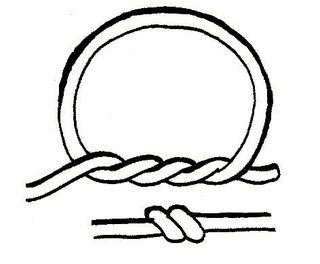
Similar to a single knot, but much more secure.
2. Single Bowline or Non-Slip Loop
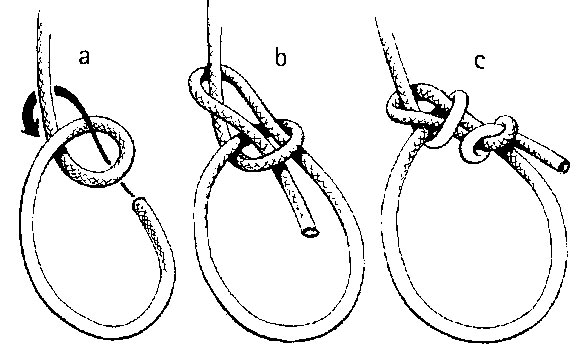
This knot creates a fixed loop that won’t slip or constrict. It’s often used when tying a rope around a person or animal, ensuring safety and comfort.
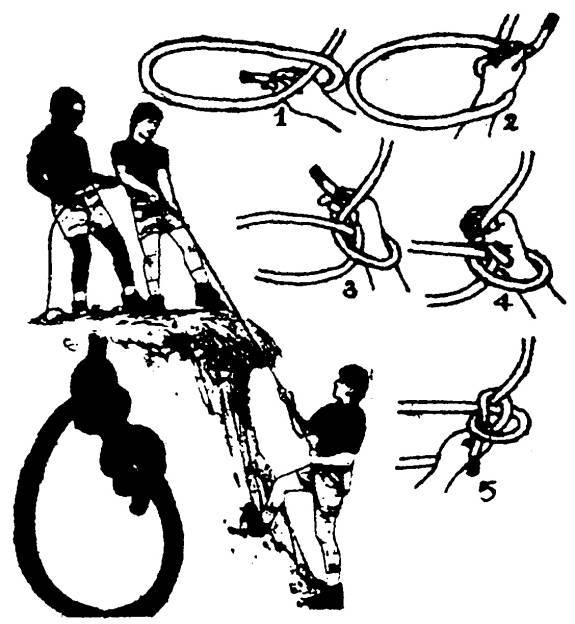
This method is commonly used in rock climbing, working at heights, or throwing a lifeline to someone who is drowning.
Simple Noose:
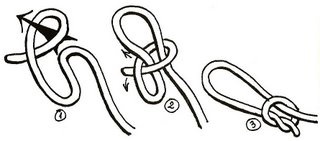
African Noose:
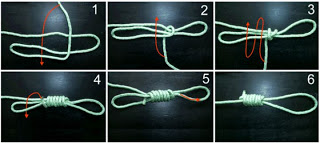
3. Overhand Knot
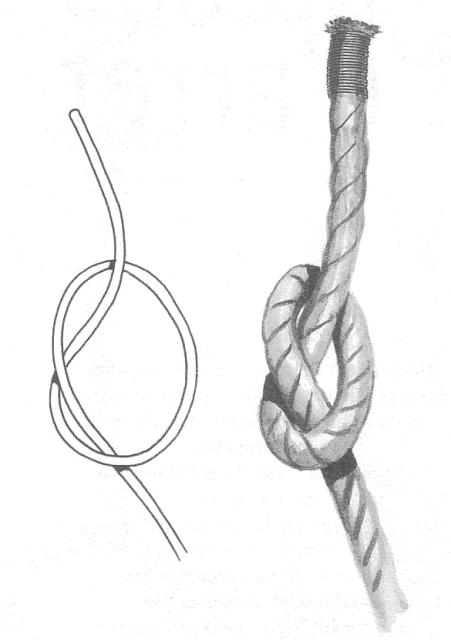
A very common knot that is easy to tie. While it is secure, it can be difficult to untie. So, think before you tie this knot if you might need to untie it later.
4. Reef Knot or Square Knot
Also a very common and simple knot, it is used to tie the two ends of a rope together to secure an object in the middle. It is also known as the thief knot or cow hitch.
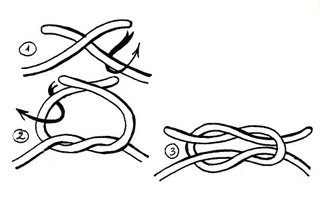
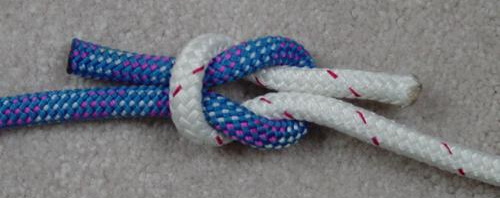
This knot can be used for packaging, tying up luggage, and finishing a bandage for a patient.
5. Figure-of-Eight Knot
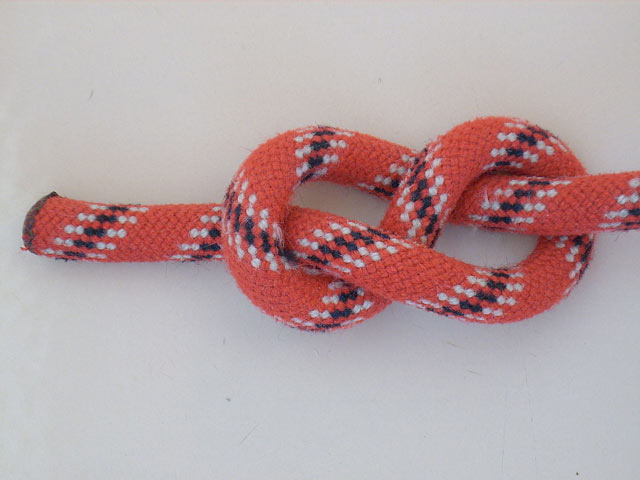
This knot is often used to prevent ropes from slipping off equipment such as sailing boat or mountain climbing ropes and ladders.
6. Clove Hitch
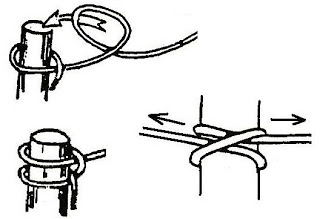
This knot is commonly used to tie a boat to a dock or to secure tent pegs. It is also the starting knot for a tree lashing.
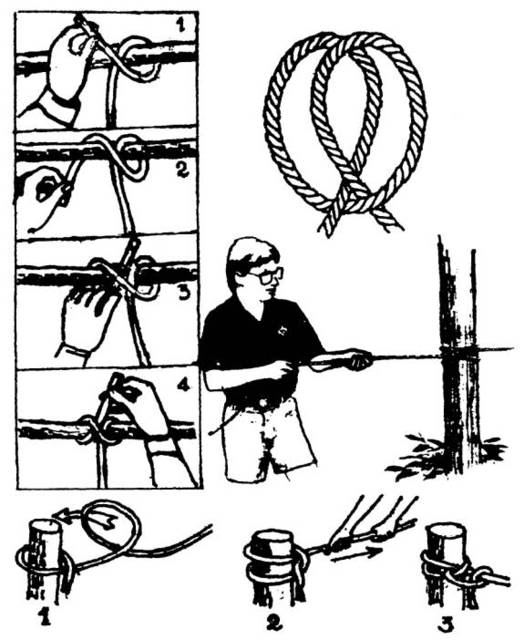
7. Lark’s Head or Cow Hitch
Also known as the cow hitch or lark’s head, depending on the region, this knot is often used for hanging, especially for hanging objects on a horizontal bar.
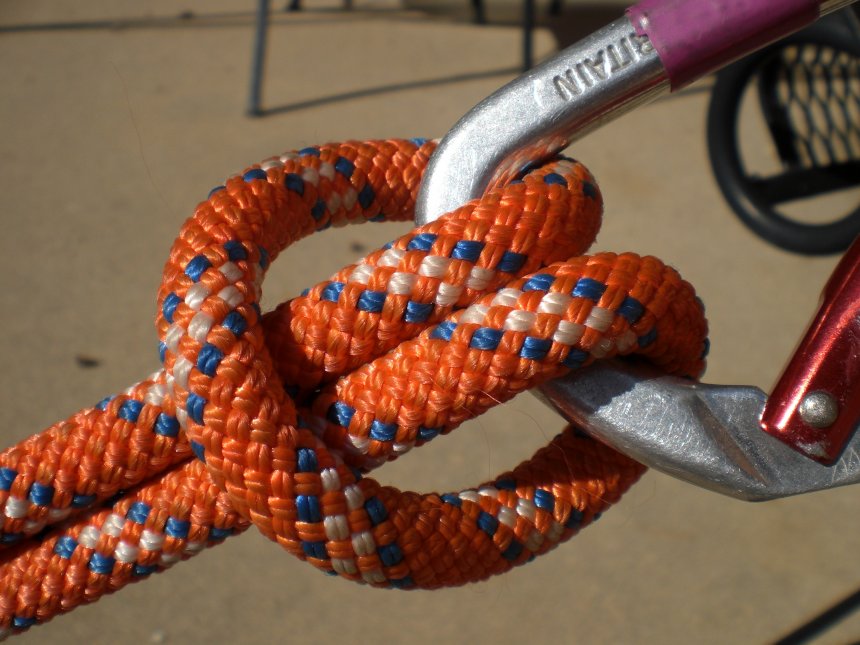
It is also used in making swings, bundling firewood, setting up flagpoles, tying elastic cords, crocheting, or making bracelets.
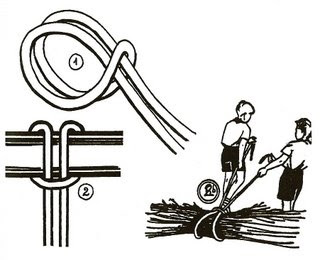
8. Sheet Bend, Becket Bend, Weaver’s Knot, and Weaver’s Hitch
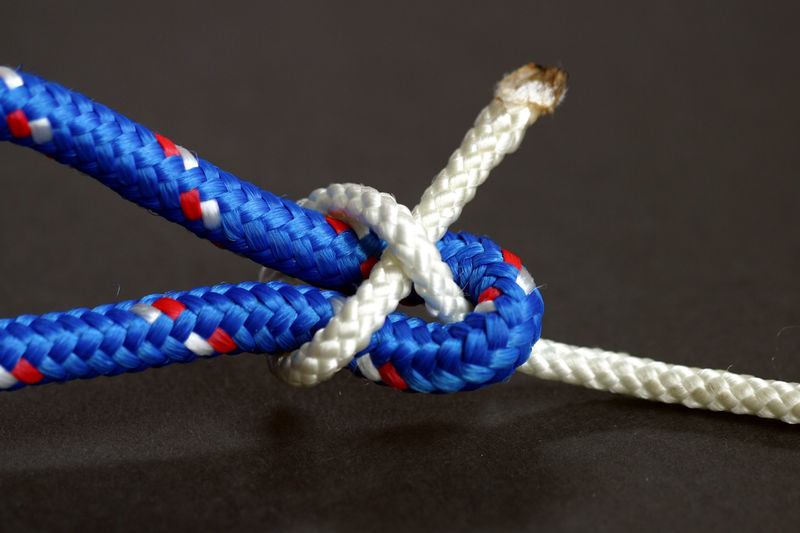
Similar to the single bowline, these knots are used when tying two ropes of different diameters together, such as when setting up a tent or making a net.
Double Sheet Bend:
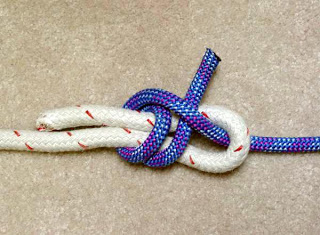
9. Bowline on a Bight
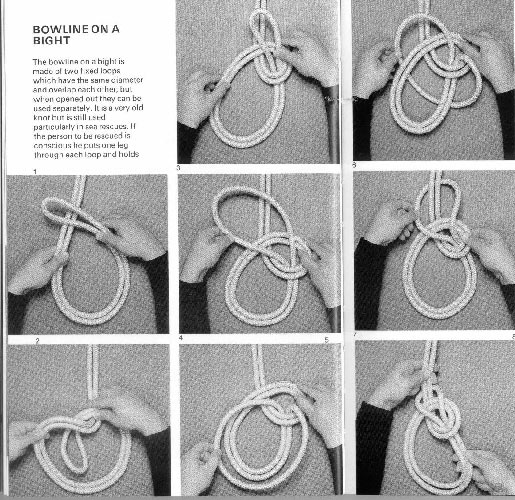
This knot also creates a fixed loop in the middle of the rope, which is secure and easy to untie. It can be used to create a toe hold in the middle of the rope or as a safe chair harness in rescue operations, providing more comfort and convenience than a single bowline.
Each loop can be used for each thigh, and the top part can be draped over the chest for added security.
10. Sheepshank
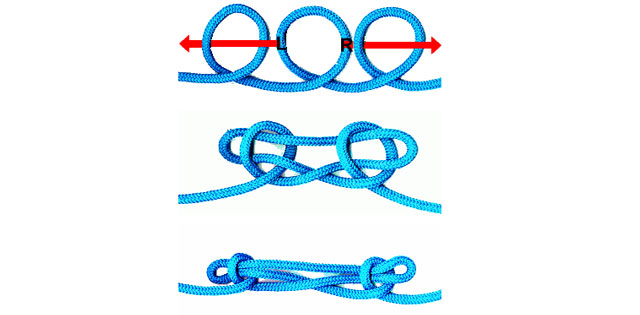
This knot is used to shorten a rope or to take up the slack in a rope. It can be useful when you want to shorten a rope without cutting it, or when securing objects to a towed vehicle or sailing boat.
11. Taut Line Hitch
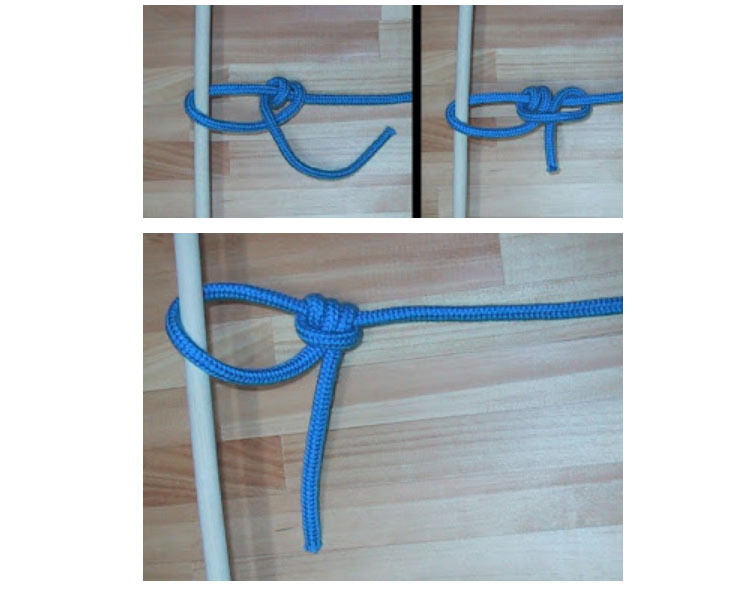
This knot allows you to adjust the length of the rope. You can even use short pieces of rope with this method.
Note: The more turns there are, the greater the friction and the more secure the knot. However, it is best not to have more than 10 turns.
12. Timber Hitch
Used to tie a rope to a pole, this knot is secure and relatively easy to tie and untie. It can also be the starting point for an X-shaped tree lashing.
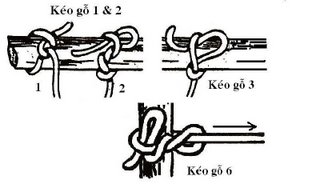
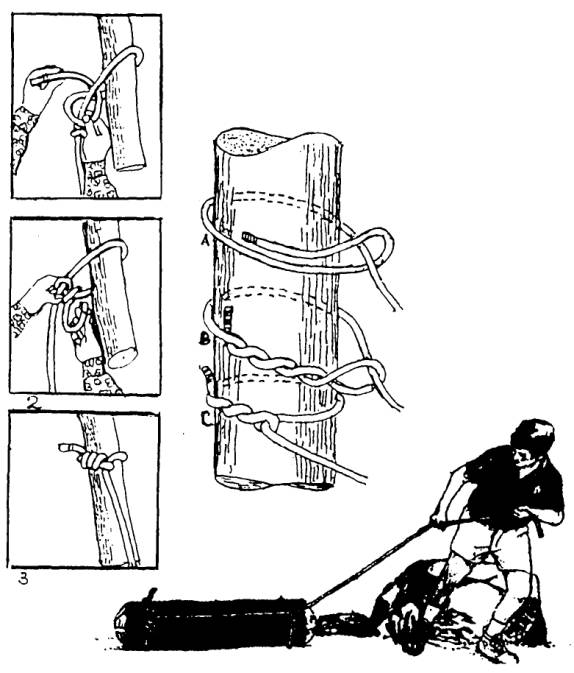
13. Trucker’s Hitch
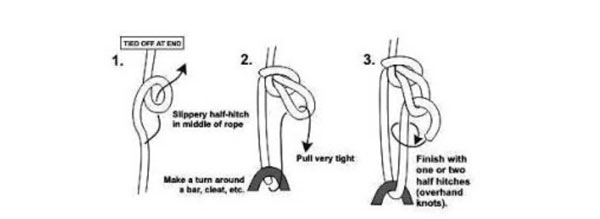
This knot is used to tighten or loosen a rope. It involves creating a loop in the middle of the rope (which can be replaced with a lark’s head), anchoring one end, and hooking the other end into the anchor. Then, thread the anchor through the loop and pull to adjust the tension, finishing with an overhand knot.
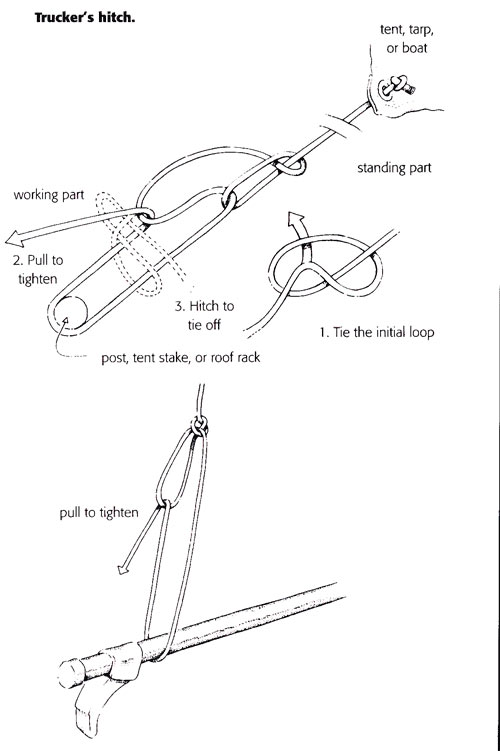
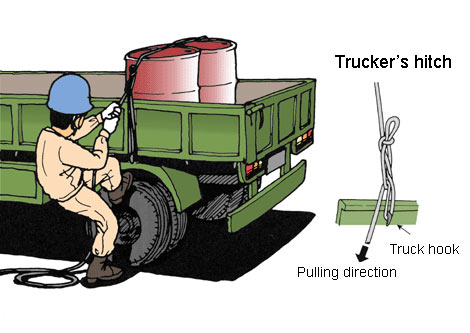
14. One Loop, Two Locks
Used to secure anchor knots.
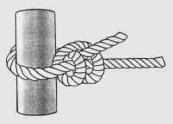
In addition to the above knots, here are some other tying techniques that you can refer to and apply in various situations.
Applications: Pulling wood, hanging hammocks, or hanging laundry.
Some Other Tying Techniques to Consider:
Fishing Loop

Anchor Hitch

Angler Loop

Eye Splice

Angler

Reef
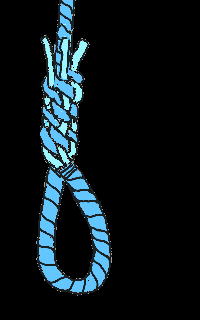
We hope that you found this article useful and that you can apply these knot-tying techniques in your daily life.

































